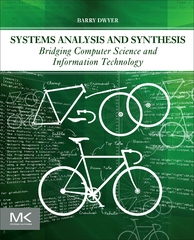Answered step by step
Verified Expert Solution
Question
1 Approved Answer
Timestamps R gives us a variety of tools for working with timestamp information. Let's start off by exploring the Date object: Dates You can use
Timestamps
R gives us a variety of tools for working with timestamp information. Let's start off by exploring the Date object:
Dates
You can use the asDate function to convert a character string to a Date object, which will allow it to contain more time information. The string will need to be in a standard time format. We can ask for today's date by asking the system Sys for the Date:
SysDate
# Set as a variable
today SysDate
today
You can also convert character strings in R to a Date object using asDate You'll need to make sure its in the correct format, or use symbols that correlate with your given format:
Code Value
d Day of the month decimal number
m Month decimal number
b Month abbreviated
B Month full name
y Year digit
Y Year digit
Let's show some examples of how to use asDate and the format argument for this:
# YYYYMMDD
asDate
# Using Format
asDateNovformatbdy
# Using Format
asDateNovemberformatBdY
Now we see how we can use asDate in combination with the format argument to basically convert any string representation of dates to an actual Date object, which is useful for time series analysis.
Time
Just like with Dates, we can also convert strings and work with them for time information. R uses a POSIXct object type to store time information. It's a bit outside the scope of this course, but POSIX represents a portable operating system interface, primarily for UNIX systems, but available on other operating systems as well. As far as what we need to know now, we can just use asPOSIXct for converting string to a POSIXct object type for time series analysis, the format symbols are best seen through the help documentation for the strptime function:
helpstrptime
strptime base R Documentation
Datetime Conversion Functions to and from Character
Description
Functions to convert between character representations and objects of classes "POSIXlt" and "POSIXct" representing calendar dates and times.
Usage
## S method for class 'POSIXct'
formatx format tz usetz FALSE,
## S method for class 'POSIXlt'
formatx format usetz FALSE,
## S method for class 'POSIXt'
ascharacterx
strftimex format tz usetz FALSE,
strptimex format, tz
Arguments
x
An object to be converted: a character vector for strptime, an object which can be converted to "POSIXlt" for strftime.
tz
A character string specifying the time zone to be used for the conversion. Systemspecific see asPOSIXlt but is the current time zone, and GMT is UTC. Invalid values are most commonly treated as UTC, on some platforms with a warning.
format
A character string. The default for the format methods is Ymd H:M:S if any element has a time component which is not midnight, and Ymd otherwise. If optionsdigitssecs is set, up to the specified number of digits will be printed for seconds.
Further arguments to be passed from or to other methods.
usetz
logical Should the time zone abbreviation be appended to the output? This is used in printing times, and more reliable than using Z
Details
The format and ascharacter methods and strftime convert objects from the classes "POSIXlt" and "POSIXct" to character vectors.
strptime converts character vectors to class "POSIXlt": its input x is first converted by ascharacter. Each input string is processed as far as necessary for the format specified: any trailing characters are ignored.
strftime is a wrapper for format.POSIXlt, and it and format.POSIXct first convert to class "POSIXlt" by calling asPOSIXlt so they also work for class "Date" Note that only that conversion depends on the time zone.
The usual vector recycling rules are applied to x and format so the answer will be of length of the longer of these vectors.
Localespecific conversions to and from character strings are used where appropriate and available. This affects the names of the days and months, the AMPM indicator if used and the separators in formats such as x and X via the setting of the LCTIME locale category. The current locale of the descriptions might mean the locale in use at the start of the R session or when these functions are first used.
The details of the formats are platformspecific, but the following are likely to be widely available: most are defined by the POSIX standard. A conversion specification is introduced by usually followed by a single letter or O or E and then a single letter. Any character in the format string not part of a conversion specification is interpreted literally and gives Widely implemented conversion specifications include
a
Abbreviated weekday name in the current locale on this platform. Also matches full name on input: in some locales there are no
Step by Step Solution
There are 3 Steps involved in it
Step: 1

Get Instant Access to Expert-Tailored Solutions
See step-by-step solutions with expert insights and AI powered tools for academic success
Step: 2

Step: 3

Ace Your Homework with AI
Get the answers you need in no time with our AI-driven, step-by-step assistance
Get Started


